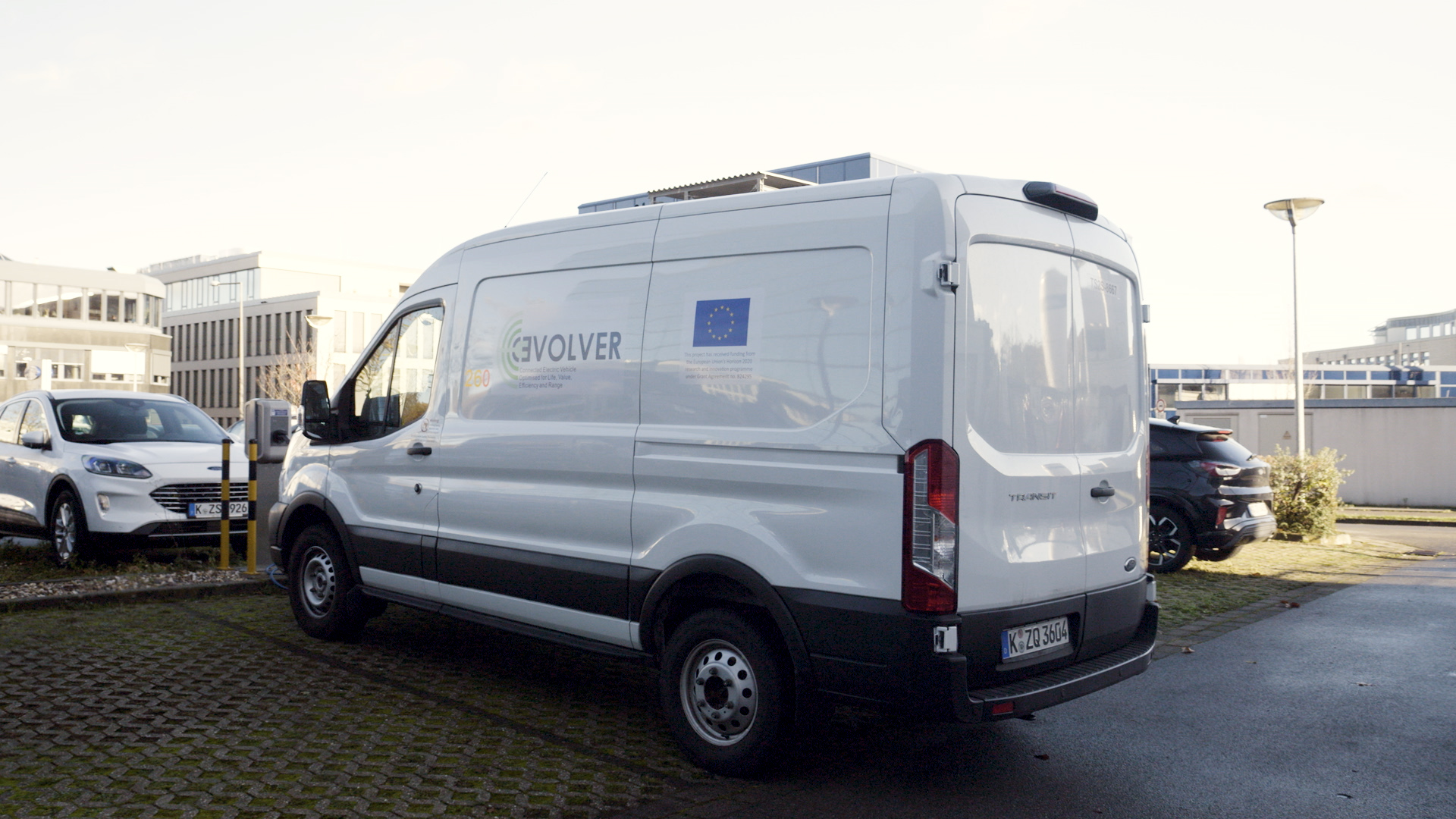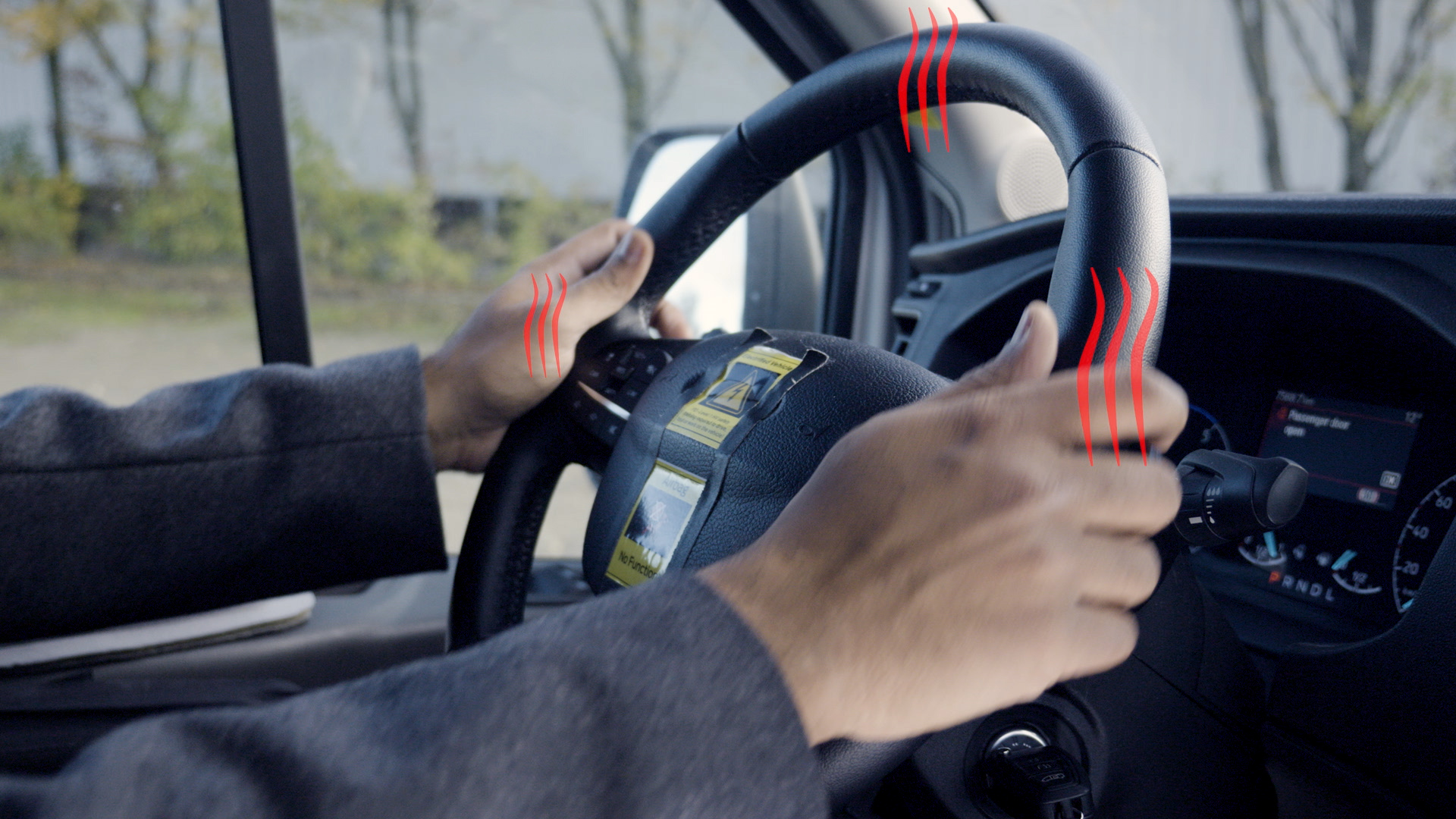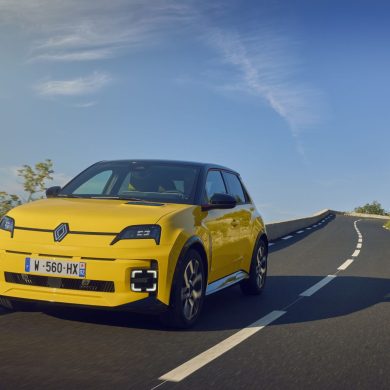
What is the most energy efficient way to stay warm? As the cost of heating our homes increases, it is a question that is on many people's minds. Ford engineers were tasked with answering the same question as part of a project to improve the autonomy of electric vehicles.
When it comes to heating electric vehicles, hot air can be fed into the cabin using the air conditioning (A/C) system. Alternatively, however, the surfaces can be heated. These can be surfaces with which the passengers are in direct contact or panels that radiate heat to the driver and passengers.
In both cases, power is required from the battery. However, the engineers discovered that with heated surfaces the energy consumption for heating the cabin can be reduced by 13% compared to a standard air conditioning system - and this could extend the electrical autonomy by 5% with a standard charge. 1 This is a difference capable of adding hundreds of extra kilometres of autonomy on an annual basis.
"We all know that if we open the doors or windows when it's cold outside, the temperature inside the vehicle drops. This is strongly observed in delivery vans, as drivers make frequent deliveries and the heat generated through the air conditioning is lost more quickly, while the heated surfaces stay warm," said Markus Espig, systems engineer, Propulsion Systems Engineering, Ford European Research & Innovation Center. "Reducing energy consumption not only improves autonomy, but also reduces costs and helps to travel more sustainably."
The survey was conducted in the context of the Program Connected Electric Vehicle Optimized for Life, Value, Efficiency and Range (CEVOLVER) of the European Commission which ran from October 2018 to October 2022. 2 The project was designed to inform how new electric vehicles are built and to help create software updates for EVs already on the road. The results from the heat management tests provide fodder for the development of future Ford vehicles.
By 2026, Ford plans to sell 600,000 EVs per year in Europe, supporting its global target of producing 2,000,000+ EVs per year over the same period.
How the test worked

The engineers put in an all-electric Ford E-Transit heated armrests, floor mats, door panels, windscreens and a panel under the steering wheel. The test involved deliveries of parcels and special goods, with the driver covering a distance of 350 kilometres in a working day on roads in and around Cologne, Germany. The tests were conducted in both winter and summer, on dry and wet roads, as well as in heavy rain and wind, reflecting Ford's unrivalled expertise in meeting the needs of van buyers.
The research also showed that changes in weather, traffic and road conditions can affect autonomy. Integrating this data into the autonomy calculator would help to predict it more accurately in real time. For commercial vehicles, this aggregated driving data could be used as "fleet autonomy prediction" to estimate the energy requirements for a particular journey.
Among the technologies tested by Ford engineers that could offer significant improvements in energy and time savings include:
- An heat exchanger which takes the heat dissipated by the electric power train and uses it to heat the cabin and/or battery pack
- An battery cooling system which allows efficient cooling and conditioning of the battery array
- The Eco–routing in conjunction with the current situation charge calculates the optimal route, including charging stops, to make the most of the vehicle's range.
- The smart fast charging preheats or preheats the battery before the next fast charging session
- The function Powertrain conditioning keeps the components of the electric drive unit at temperature for optimum energy consumption.
The CEVOLVER research is a continuation of Ford's tests on how to reduce energy consumption in electric cars, such as by the use of interior lighting that creates a cooler or warmer feeling in the cabin. The advanced energy-saving technology that will be used in Ford's future electric vehicles includes a steam-injected heat pump that features all-electric Ford E-Transit Custom.
In addition to developing future technologies to increase autonomy, Ford already offers a number of useful features to maximise the efficiency of its current electric vehicles. For example, the Mustang Mach-E and E Transit offer Scheduled Pre-Conditioning to remotely optimize cabin and battery temperature while still charging before departure. The vehicle will evaluate weather conditions to decide how much power is needed to create a comfortable cabin temperature before the owner's designated departure time. Ford estimates that an E-Transit half-loaded at an outside temperature of 0° Celsius will maintain 75% of its range if the pre-conditioning function is applied, compared to 66% otherwise. For increased range, Ford's electric vehicles also offer selectable driving profiles to reduce energy requirements, as well as the ability to recover energy during braking.






